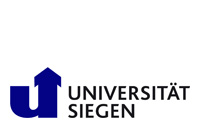
News
You are here
Title: Object Representation and Matching Based on Skeletons and Curves
Author: Dr.-Ing. Christian Feinen
Supervisor: Prof. Dr. Marcin Grzegorzek
Reviewers: Prof. Dr. Marcin Grzegorzek and Prof. Dr. Volker Blanz
Date of defence: 10.03.2016
Abstract:
The present thesis is dedicated to the problem of object recognition in the three-dimensional space. This means instead of using exclusively the information that is typically transported by a two-dimensional image, the core concept of this work additionally incorporates the third dimension, namely the depth. This data is captured by a RGB-D or pure depth sensor capable of measuring the distance from the device’s position to those objects residing inside its field of view. Almost all projects which are going to be discussed in this work are processing objects in three-dimensional (3D) space. Therefore, it does not matter if these instances were naturally captured or synthetically constructed for the purpose of evaluation.
The contribution of the current work is now to map the previously described concept into three-dimensional space in order to apply it to 3D objects. Hence, the thesis begins with a deeper investigation of the PSSGM to identify its strengths and weaknesses. In addition to this, a competing set of shape descriptors is introduced to further evaluate the recognition performance of the PSSGM by setting it in relation to this new approach. After encountering skeleton-driven matching techniques as well as skeletal structures in general, two projects are presented able to apply this concept to 3D data. While the first one is only operating on partial views of a certain object (e.g. a chair or a stand), the second method performs the matching on fully segmented vascular structures. Moreover, both approaches substitute the Hungarian algorithm with a more sophisticated procedure covering the problem of finding Maximum Weight Cliques (MWC) inside a graph. The last sub-project of this work addresses the topic of extracting curve skeletons from 3D objects whose geometries rather tend to produce surface skeletons. Besides this, topological features are exploited for the task of object recognition.
In summary, it was possible to successfully map the concept of the PSSGM into the 3D space with the intent to accomplish categorisation tasks. Moreover, several weak points of the original proposal were revealed so that all derivatives were enhanced in terms of accuracy and robustness. Even though all research activities were primarily applied to the development of shape features, capabilities were suggested to enrich the skeleton descriptors for the task of object instance recognition. Apart from this, excellent as well as promising recognition results could be achieved in almost all sub-projects during thoroughly planned and executed evaluations. Finally, it has to be noted that the 3D version of the PSSGM has the potential to solve a variety of complex object recognition tasks. However, this proficiency is realised at the expense of a higher processing time and the obligatory use of advanced algorithmics.

